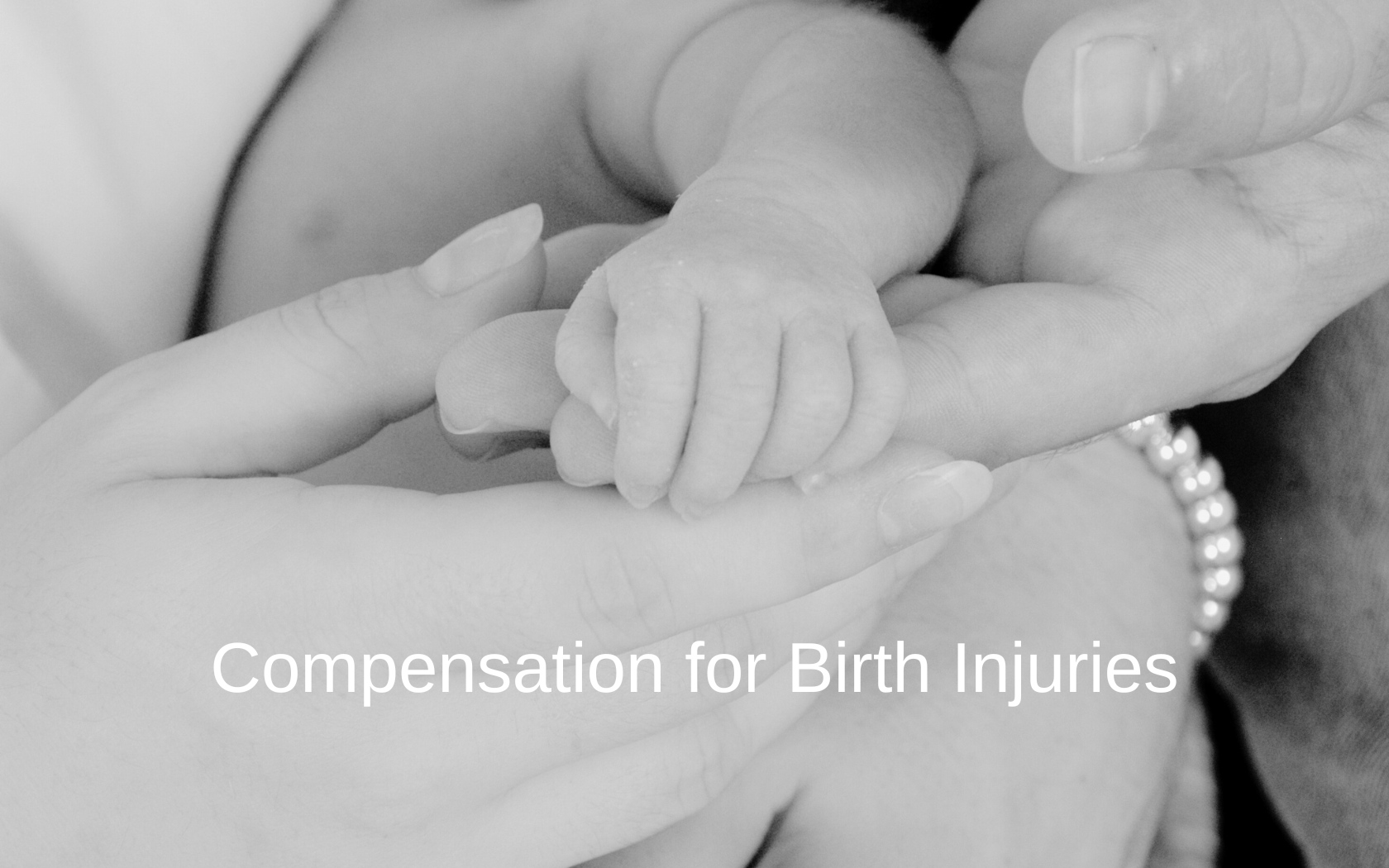When birth injuries occur due to medical negligence, the dream of “settling” into a perfect family life can be shattered. Families find themselves seeking a different kind of “settlement”—birth injury lawsuit settlements, to be exact. They’re meant to provide justice, compensation, and a path forward amidst unexpected challenges.
In this article, we’ll explore how families can reclaim their peace and establish a secure foundation for their children’s futures by obtaining birth injury compensation.

What are Birth Injury Lawsuit Settlements?
Birth injury lawsuit settlements, or birth injury settlements, provide payments to families for injuries that occur during birth. They help cover medical bills and other costs related to the injury. They can also provide compensation for lost wages, pain and suffering, and a child’s future care.
Birth injury lawsuit settlements are different from awards won in court. They involve a mutual agreement between both parties. Court awards are decided by a judge or jury during a trial. Trials can drag on and on. So birth injury settlements are often faster and less stressful to obtain.
According to the Bureau of Justice Statistics, only about 3% of personal injury cases, including birth injury cases, go to trial. This means that the vast majority, about 97%, are settled out of court. Or, they’re dropped before reaching the trial stage.
Who Pays Birth Injury Settlements?
The hospital or doctor responsible for the injury has to pay. But usually, it’s not the doctor who’s actually forking up the cash. Insurance companies may pay all or most of the settlement.
But getting insurers to pay up is like trying to squeeze juice from a rock. It’s frustrating, time-consuming, and can leave you wondering if it’s even possible.
Luckily, birth injury lawyers are practically miracle workers. With their skills and expertise, they can turn that rock into a fountain of compensation, making insurers pay up in ways you’d think only a magician could pull off! If you’re interested in a professional opinion about your case, contact us here.
What is the Average Amount for Birth Injury Settlements?
According to The Doctors Company, a medical malpractice insurer, the average payout for birth injury claims was $936,843 in 2019. That’s about $1.4 million in 2024, adjusted for inflation, but the amount can be much more, depending on the specific details of the case.
Birth injury compensation our law firm has secured includes:
- $6,500,000 for a child with an HIE brain injury that resulted from negligent fetal heart monitoring
- $6,000,000 for a Texas family whose child developed brain damage after the mother suffered postpartum hemorrhage.
- $5,000,000 for a mother who had multiple amputations after postpartum hemorrhage.
- $4,000,000 for a child diagnosed with cerebral palsy resulting from negligent administration of Pitocin.
- $3,600,000 for a newborn who developed HIE after negligent resuscitation.
- $3,000,000 for a child diagnosed with cerebral palsy after the mother’s uterus ruptured.
- $2,800,000 for a Texas family after negligent handling of preeclampsia resulted in death.
See additional case results from our firm here.

How Much Birth Injury Compensation Can I Get?
The amount of birth injury compensation you could receive depends on several important factors. These include:
- The severity of the injury: The more severe the injury, the higher the compensation.
- Impact on quality of life: Compensation considers how the injury affects the child’s daily life and future potential.
- Cost of medical treatment: This includes both immediate medical expenses and future costs for ongoing care, rehabilitation, and any special equipment needed.
- Lost wages: Parents may need to take time off work to care for their injured children. This lost income is included in birth injury lawsuit settlements.
- Pain and suffering: This non-economic damage compensates for the emotional and physical pain a child and their family endured.
- Legal/Administrative costs: These cover the expenses associated with pursuing the claim, such as attorney fees.
- Number of defendants: If more than one person contributed to the injury, the compensation amount could be higher. A claim could involve doctors, nurses, anesthesiologists, and hospitals.
- Your lawyer’s expertise: Lawyers with more experience are often able to obtain higher amounts of compensation.
The Statute of Limitations
Keep in mind that birth injury compensation can be limited by state rules. Each state sets a time limit within which a lawsuit must be filed, known as the statute of limitations. If this period expires, you lose your right to claim compensation.
The statute of limitations in Texas for medical malpractice is two years. You have two years to file, starting from the date the negligent act occurred.
There are few exceptions to the two-year rule. But don’t count on that being your case. You should meet with a lawyer as soon as possible if you suspect negligence caused your child’s injury.
Also, some states have laws that cap the amount of compensation for non-economic damages, such as pain and suffering. These caps limit how much a victim can receive, regardless of the injury’s severity. In Texas, the cap is $250,000 for healthcare providers. For hospitals, it’s $500,000.
And compensation is also reduced if parents are found to be partially responsible for an injury. For example, a mother is held partially responsible if she ignores medical advice to avoid certain activities during pregnancy, and this contributes to the birth injury.
Most Common Birth Injuries That Result in Settlements
A birth injury is any injury that happens before, during, or right after childbirth. Among the most common birth injuries that result in settlements are cerebral palsy, shoulder dystocia, and brachial plexus injuries.
Cerebral Palsy
Cerebral palsy is a neurological disorder affecting movement and muscle coordination. It can result from oxygen deprivation or trauma during birth. A delayed cesarean section or improper use of delivery instruments could cause cerebral palsy to develop. Birth injury settlements for cerebral palsy often cover lifelong medical care and support.
Shoulder Dystocia
Shoulder dystocia happens when a baby’s shoulder gets stuck behind the mother’s pubic bone during delivery. It’s a dangerous situation that can cause nerve damage or fractures. Settlements in these cases often cover the costs of ongoing medical treatment and therapy for the child.
Brachial Plexus Injuries
Brachial plexus injuries involve damage to the network of nerves controlling the arm and hand. They can occur when a doctor applies too much force during delivery. Settlements may include compensation for surgeries, physical therapy, and long-term disability if the injury leads to permanent impairment.

Am I Eligible for a Birth Injury Settlement?
To find out if you’re eligible for birth injury compensation, you should speak with an expert attorney.
In general, to file a claim, you must be able to answer “yes” to the following questions below:
- Is there a clear, documented injury that happened during childbirth?
- Is there evidence that a healthcare provider was negligent and didn’t follow standard medical practices?
- Is the injury a direct result of negligent care by a healthcare provider?
- Did the injury cause significant medical expenses, pain and suffering, or long-term disability?
If your answer is “yes” to all the questions above, we invite you to send us a request for a free consultation. Our experts can help you understand your specific situation and whether you have a strong case for obtaining birth injury compensation.
Birth Injury Settlements FAQs
To calculate compensation for damages in birth injury settlements, your lawyer will assess your economic and non-economic losses. The goal is to make sure you get an amount that covers current and future needs related to the injury.
For economic damages, you can add up all your medical bills, like hospital stays, surgeries, medications, therapy, and any specialized care. Then you’ll calculate your projected expenses for ongoing medical care. For example, it could cost over $1 million dollars to care for a child with cerebral palsy over their lifetime. Expert testimony is often used to estimate lifetime costs.
Non-economic damages, like pain and suffering, are harder to calculate. How much is your pain worth? That’s a tough question. But lawyers and insurers usually use one of two methods to calculate it. There’s the pain multiplier approach, where you multiply your medical expenses by a set multiplier. The other option is the per diem method, where you estimate the number of days you were in pain and are paid a set rate per day.
Birth injuries due to negligence happen when medical professionals don’t provide care that’s up to standard during pregnancy or delivery. Here are some examples:
– Cerebral palsy is sometimes caused by lack of oxygen during birth. This can happen when doctors ignore fetal distress or delay needed C-sections.
– Brachial plexus injuries can be caused by improper use of forceps or vacuum extractors. The condition weakens or paralyzes a baby’s arms.
– Hypoxic-Ischemic Encephalopathy (HIE) is a brain injury caused by a lack of oxygen and blood flow to the brain during labor or delivery. It can result from umbilical cord complications and delayed C-sections.
Birth injury and birth trauma are similar terms. But they’re not exactly the same. A birth injury is physical damage sustained by a newborn (or the mother) during childbirth. Birth trauma is a broader term. It refers both physical injuries and psychological or emotional harm experienced during childbirth.




